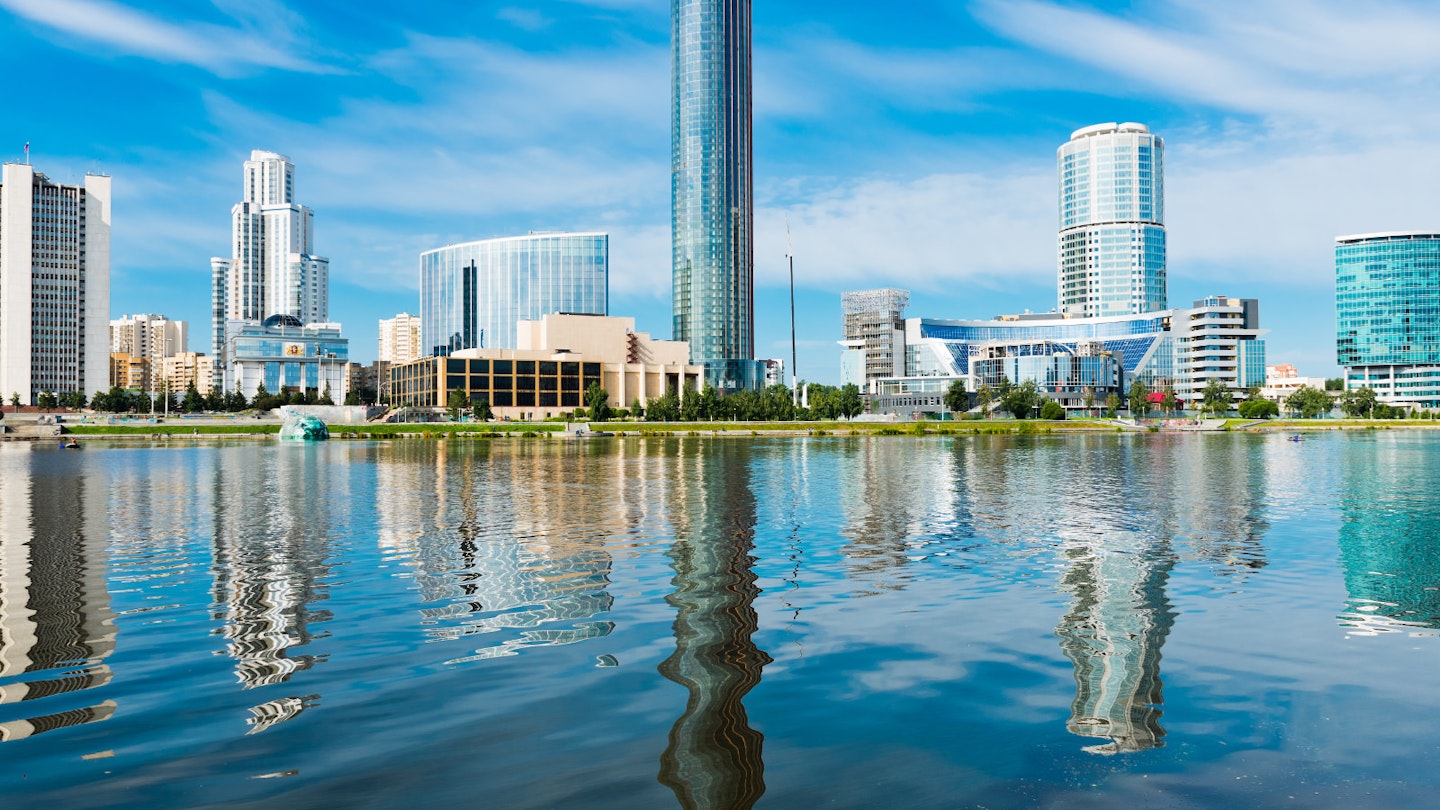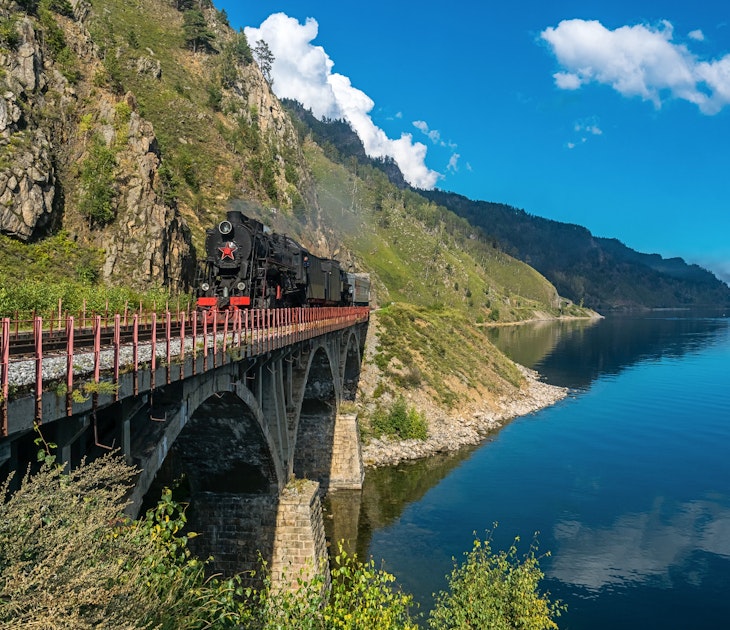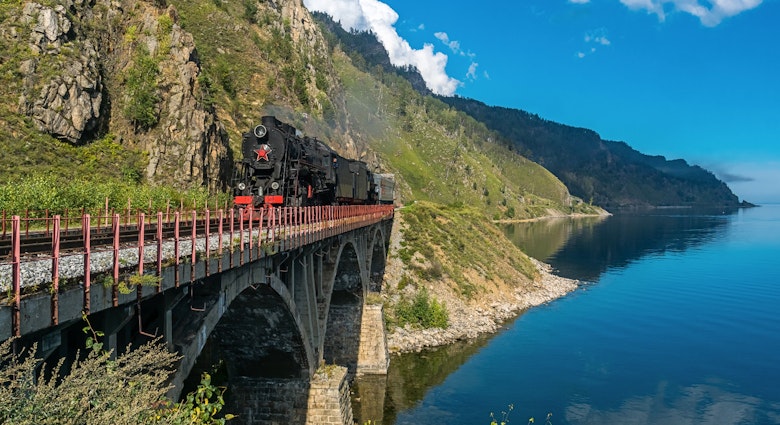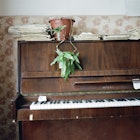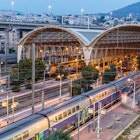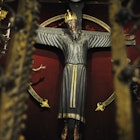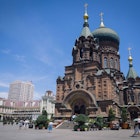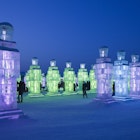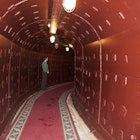Russia’s fourth-largest city doesn’t overstate its importance with glitz and glamour. Yekaterinburg, instead, sits back and lets its pedigree reel you in. Savvy businesspeople and investors have been coming here for a long time, but as of late holidaymakers are stopping by too, often to break up their Trans-Siberian journey and explore the Ural Mountains. Those wise enough to stay for a few days will discover a vibrant city with energy to match, and a nature playground a hop and a skip away.
Named after Peter the Great’s wife Catherine, the capital of the Ural region lies on the border of Europe and Asia and has long been a prosperous city. Yekaterinburg played a major role in trade between the east and west throughout the 1700s and 1800s, increasing its status and wealth; more recently, mining and industrial work has propelled the city into the limelight. And it keeps reaching for the stars: Yekaterinburg is one of the host cities for the 2018 FIFA World Cup, and the Russian government has injected billions of roubles to improve its infrastructure in preparation for the big event (including the upgrade of the Central Stadium and the construction of new metro stations).

City life
Although Yekaterinburg is spread out, most of the highlights are located in the historic centre. English-language guided walking tours aren’t mainstream yet, but in 2010 local blogger Dmitry Kalaev asked his followers to vote for Yekaterinburg’s most interesting sites, which resulted in the development of a 6.5km Red Line trail (ekbredline.ru) in 2011.
Starting at Ploshchad 1905 Goda, the main square in town, the walking route passes by 35 attractions as voted by thousands of residents, including beautiful old merchant houses, Russian Orthodox churches (Church upon the Blood is the city’s biggest cathedral, built on the Romanov death site), the first school, the first theatre, the oldest house, the peculiar QWERTY monument, street art, museums and more.
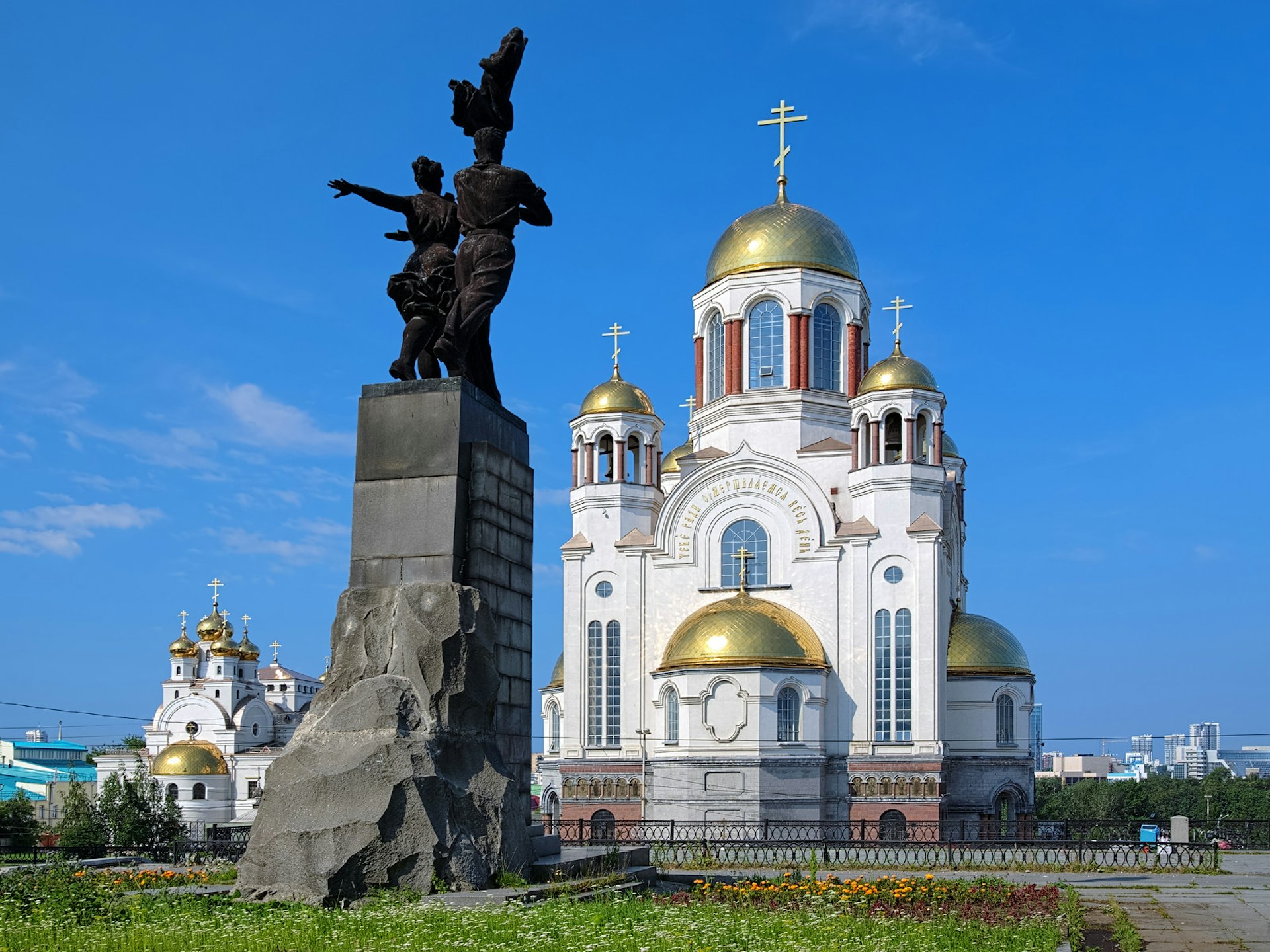
Yekaterinburg’s latest museum isn’t on the route but if voting were to happen again, residents may advocate it be included. Opened in 2015, the Boris Yeltsin Museum (yeltsin.ru) is part of the swish Boris Yeltsin Presidential Center, with quite the impressive (and somewhat unusual) collection of exhibits. There are replica rooms, video clips, sound and lighting effects and plenty of immersive displays spread out across nine rooms. If learning about Russia’s first president isn’t high on your list, head to Russia’s tallest skyscraper outside Moscow for a different perspective. The 188m-tall Vysotsky Tower has unrivalled city views from the 54th floor, and sunsets from here on a clear day are very Instagramable.
Sightseeing will, no doubt, whet your appetite and there’s plenty on offer in the culinary stakes. Russian favourites – such as borsch (beetroot soup) and pelmeni (ravioli dumplings) – are easy to find, with ample restaurants offering a Ural take on the well-loved dishes (try reindeer meat). Pozharka and Dacha are both good restaurant choices. International cuisine is popular too, with everything from Japanese and Chinese to Uzbek and Georgian easy to find.
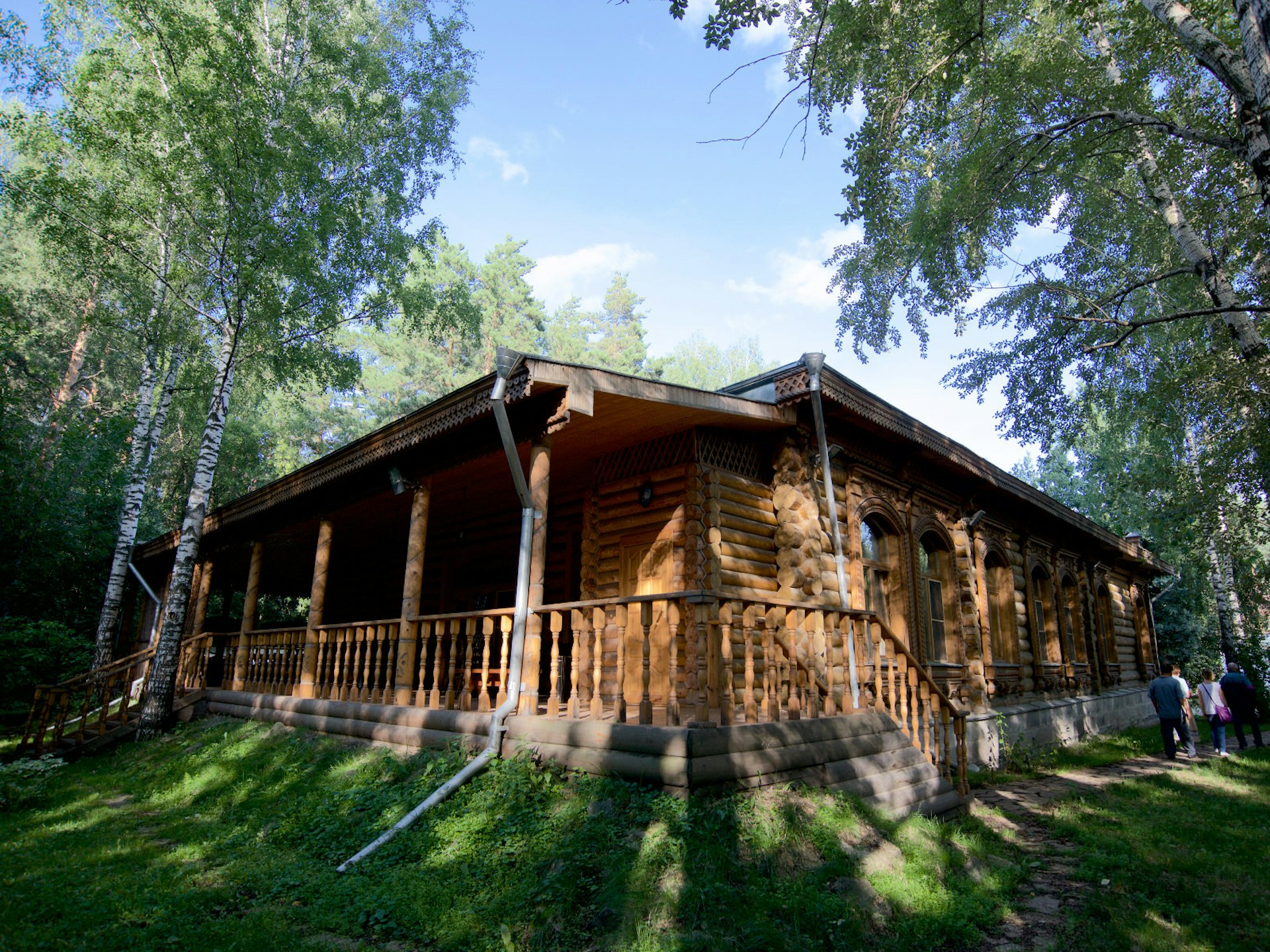
The Russian banya
One of the top things to do in Yekaterinburg – and all of Russia, actually – is get piping hot, then get whipped and drenched in cold water (or better still, roll around in the snow). Welcome to the Russian banya!
No bathhouse experience is as talked about as the Russian bath. If you can swing it, your best bet is to get yourself an invite to a resident’s banya, as there’s nothing quite like the real deal. Your second best option is to book a banya session at one of the many complexes around town, where experiences range from simple home-style bathing practices to out-of-this-world extravaganzas.

Ruskie Bani (bani66.ru) was one of the first public banyas to open in Yekaterinburg in 2002. Here guests can choose to relax in traditional-style wooden banyas or splurge in contemporary fit-outs with fancy showers and Jacuzzis. Pelmeni and other Russian food can be ordered, and staff members are on hand to offer a variety of treatments including massages, steaming sessions, herbal-infusion soakings and… beatings. Visitors can choose from birch, oak, juniper, eucalyptus or fir brooms for the only-in-Russia experience.
Chapaevskiye Bani (m.chapaev-bani.ru) offers a slightly more luxurious option, and guests can stay at the Palais Royal next door if they want a multi-day banya indulgence.

Out of town
Yekaterinburg is perhaps most famous for the Romanov family tragedy. On 16 July 1918, Tsar Nicholas II, his wife Alexandra, their five children and four of their employees were assassinated by Bolshevik troops in the Ipatyev house basement, where the Church upon the Blood now stands. The cremated remains were discarded in a mine pit about 15km out of town, the site now known as Ganina Yama. Today there’s a monastery made up of seven wooden chapels (one in honour of each of the murdered family members) on the site, called Monastery of the Holy Martyrs – a somber reminder of the devastation that took place a century ago.
For something a little less morose, day trips to national parks offer visitors the chance to escape the hustle and bustle of city life. Olenyi Ruchyi (Deer Springs; olen.ur.ru), about 90-minutes’ drive from Yekaterinburg, has some fantastic hiking trails that traverse birch forest and lichen-steeped caves. Bachovskie Mesta (бм-парк.рф), less than an hour’s drive from the city centre, is a scenic vastness of pine and birch grove forests, meandering rivers and small calm lakes. Russians come here to hike, horse ride, cycle and drive snowmobiles in winter.
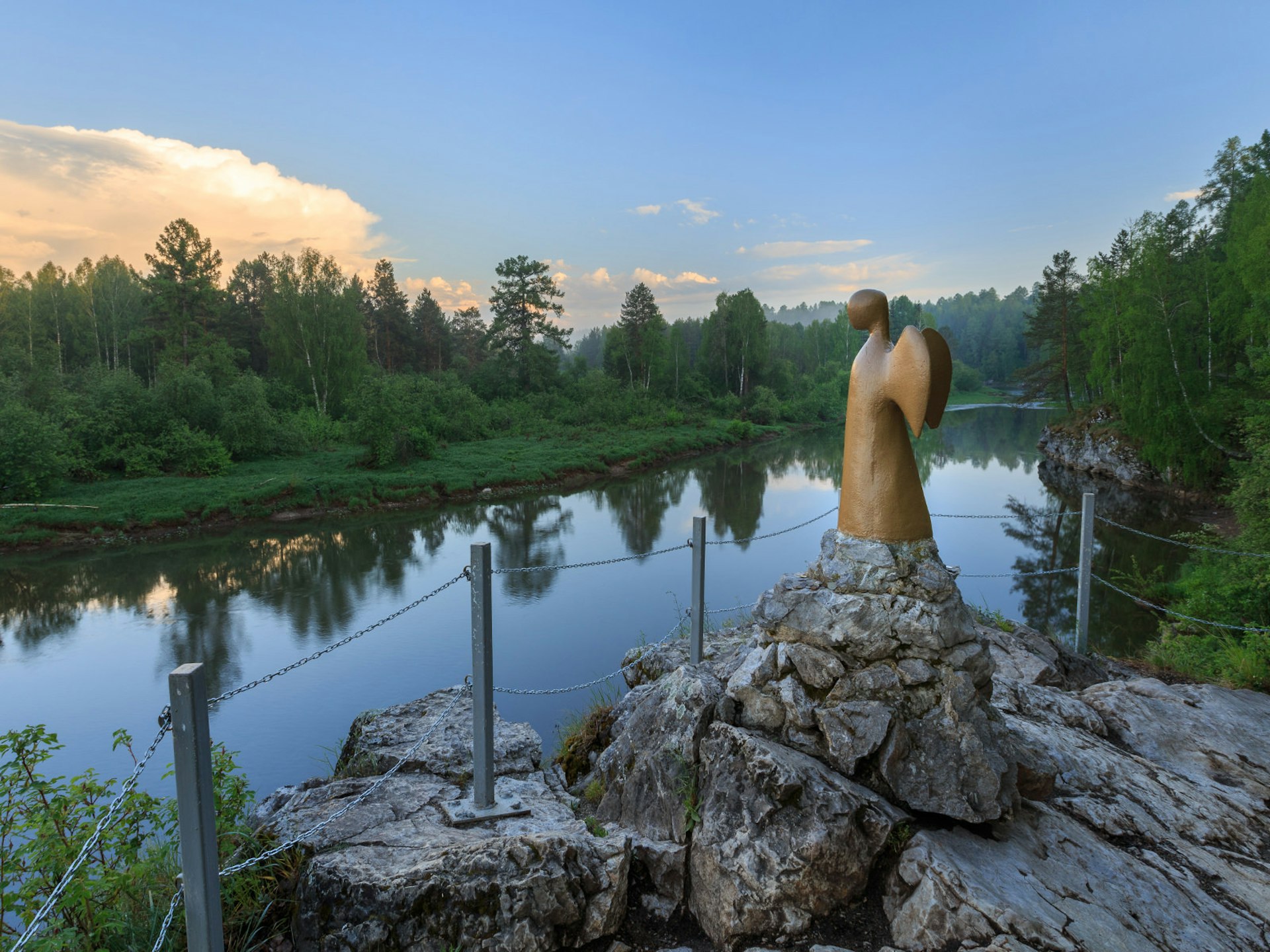
There are plenty of other nature parks nearby, too – after all, Yekaterinburg is located in the heart of the lustrous Ural Mountains. You just need a sense of adventure and a Russian dictionary or a guide, as beyond the main cities (and often even in cities) Russian is the only language spoken. Of course, if you’re travelling on the Trans-Siberian Railway you’ll no doubt get some Russian language practice anyway – whether you want to or not.
Make it happen
Yekaterinburg is one of the biggest cities on the Trans-Siberian route and a popular spot for those looking to break up the long journey; Koltsovo International Airport services plenty of domestic and international flights.
If you can’t get enough of the city panorama from the viewing platform of the Vistosky Tower, Visotsky Hotel is located on floors 37 to 41 of the same building, with a luxury spa for guests on the 52nd floor.
